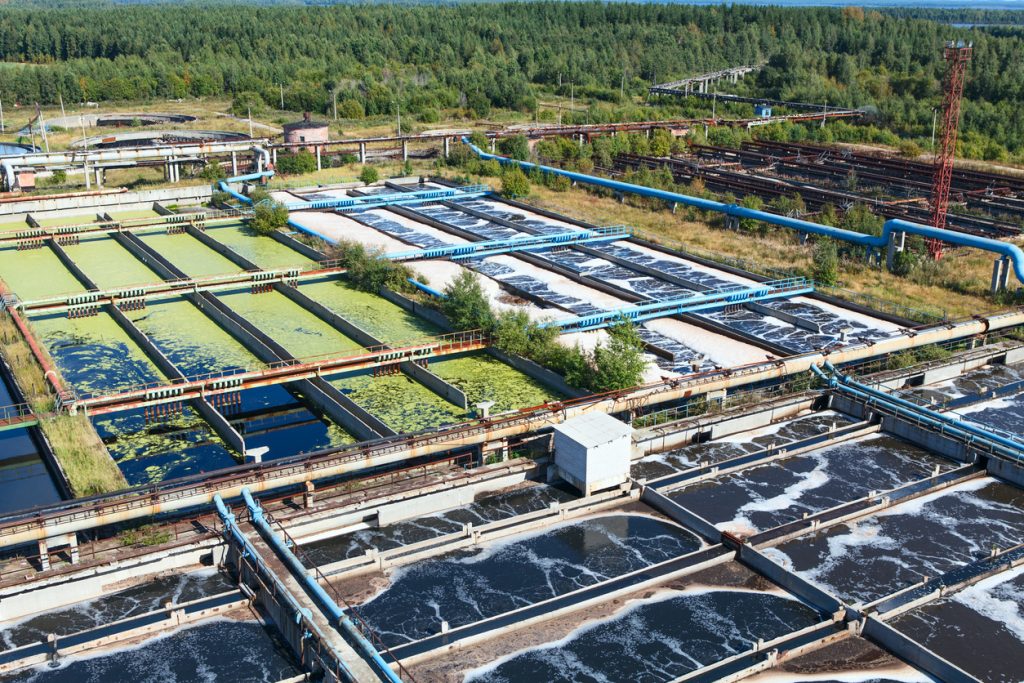Trick Challenges in Urban Waste Water Treatment Methods
Trick Challenges in Urban Waste Water Treatment Methods
Blog Article
Strategic Approaches to Enhance Waste Water Treatment Efficiency and Reduce Ecological Impact
In the world of drainage treatment, the mission for boosted performance and lowered environmental effect is a perpetual challenge that demands tactical solutions. As culture faces the necessary to manage water sources sustainably, a nuanced method ends up being vital. The assimilation of advanced therapy modern technologies, energy-efficient processes, resource healing approaches, enhanced nutrient elimination methods, and smart monitoring and control systems represents a complex framework for dealing with these pressing issues. However, what lies at the core of this facility web of strategies is the potential to revolutionize the way we come close to waste water therapy, not simply as a procedure of disposal, yet as a valuable possibility for advancement and environmental stewardship.
Advanced Treatment Technologies
Sophisticated membrane layer filtration systems have actually transformed sophisticated wastewater therapy processes, considerably enhancing the removal of contaminants. This innovation has actually confirmed to be highly efficient in getting rid of a large variety of pollutants, including pharmaceuticals, heavy metals, and natural substances, which are usually testing to remove via traditional treatment techniques.
Additionally, membrane purification systems use various advantages over standard treatment approaches. In addition, these systems are very flexible and can be quickly integrated right into existing treatment plants or used as standalone systems for decentralized applications.
Energy-Efficient Procedures
The integration of energy-efficient procedures in wastewater therapy systems is important for enhancing resource utilization and minimizing functional prices. By applying energy-efficient innovations, therapy plants can substantially lower their carbon impact and total environmental effect. One essential strategy to improving power performance in wastewater treatment is the application of sophisticated oygenation systems, such as fine bubble diffusers or surface aerators, which can boost oxygen transfer efficiency and minimize power intake. Additionally, integrating power recovery systems, like anaerobic digestion for biogas manufacturing or making use of excess heat for thermal processes, can assist counter energy demands and advertise sustainability.
Additionally, enhancing procedure control and automation with making use of sophisticated sensing units and checking systems can boost total power effectiveness by changing operations in real-time based upon actual demand and conditions. Executing energy audits and routinely keeping an eye on power performance indicators are essential practices to determine locations for improvement and track energy-saving campaigns properly. On the whole, the adoption of energy-efficient procedures in wastewater therapy not just benefits the environment but additionally adds to long-lasting cost savings and functional sustainability.
Source Recovery Strategies
With a concentrate on maximizing source usage and sustainability in wastewater therapy systems, the execution of source healing techniques becomes a pivotal facet in boosting functional effectiveness. Source healing strategies in wastewater therapy include the recognition and extraction of valuable sources from the waste stream, thus transforming what was once taken into consideration waste into a valuable property. By executing source recovery strategies such as nutrient removal and recuperation, energy generation from raw material, and the production of multiple-use water, wastewater treatment plants can decrease environmental effect while optimizing efficiency.

Improved Nutrient Removal Strategies
Implementing innovative nutrient elimination methods is important for optimizing the performance of wastewater therapy systems. Improved nutrient removal plays a crucial role in reducing the environmental effect of cured effluent released into water bodies. One of the crucial strategies used for improved nutrient elimination is the process of biological nutrient removal (BNR), which involves the elimination of nitrogen and phosphorus with biological procedures. This can be achieved via using specialized microorganisms that can transform nitrogen compounds right into inert nitrogen gas through denitrification, and accumulate phosphorus within their cells with a process called boosted biological phosphorus elimination (EBPR)

Along with BNR, progressed treatment techniques such as membrane layer bioreactors (MBRs) and built marshes can likewise be used to boost nutrient elimination efficiency. MBRs utilize membranes to attain high-grade effluent requirements by successfully eliminating nutrients and suspended solids. Created marshes mimic all-natural marsh processes to remove nutrients through plant uptake, microbial activity, and sedimentation. By incorporating these advanced nutrient removal strategies into wastewater treatment municipalities, industries and systems can properly reduce nutrient air pollution and secure the environment.
Smart Monitoring and Control Solution
Utilizing cutting-edge modern technology, the assimilation of wise monitoring and control systems changes the functional efficiency of wastewater therapy centers. These systems incorporate innovative sensors and data analytics to continually keep track of key specifications such as pH levels, turbidity, liquified oxygen, and flow prices in real-time. By collecting and assessing this information, operators can get important understandings into the efficiency of the treatment procedures, enabling aggressive modifications to maximize treatment performance.
Smart tracking and control systems additionally sustain remote surveillance capabilities, permitting operators to access real-time information and control features from off-site areas. This remote accessibility boosts operational versatility and responsiveness, enabling quick treatments in case of system breakdowns or variations in influent quality. In addition, the predictive upkeep capabilities of these systems assist protect against equipment failings and decrease downtime, eventually enhancing the overall dependability of wastewater therapy operations (Waste Water Treatment).
Final Thought
Finally, strategic techniques such as advanced treatment modern technologies, energy-efficient processes, resource healing methods, boosted nutrient removal special info techniques, and wise surveillance and control systems play a critical duty in improving wastewater treatment effectiveness and reducing environmental effect. By executing these methods, wastewater treatment Related Site plants can improve their overall performance, decrease energy consumption, recover important resources, and guarantee compliance with environmental policies. These strategies are important for lasting and efficient wastewater administration methods.

In final thought, critical methods such as innovative treatment technologies, energy-efficient processes, source healing techniques, enhanced nutrient elimination methods, and clever surveillance and control systems play a critical role in improving wastewater therapy efficiency and decreasing environmental effect.
Report this page